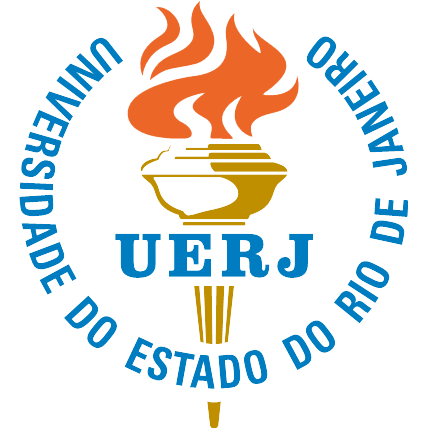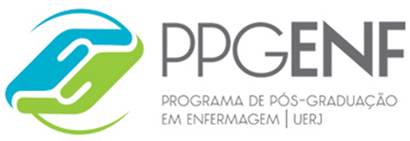Fatores associados às vítimas de tentativas de suicídio atendidas no âmbito da urgência e emergência [Factors associated with victims of suicide attempts treated in a hospital emergency service] [Factores asociados a víctimas de intentos de suicidio atendidas en el ámbito de urgencia y emergência]
DOI:
https://doi.org/10.12957/reuerj.2022.69767Keywords:
Enfermagem, Emergências, Serviço Hospitalar de Emergência, Tentativa de Suicídio, Suicídio.Abstract
Objetivo: analisar os fatores associados e o desfecho das vítimas de tentativa de suicídio atendidas em um serviço hospitalar de urgência e emergência. Método: estudo observacional, longitudinal, retrospectivo e quantitativo, com dados de 191 prontuários de vítimas de tentativa de suicídio atendidas entre 2013 e 2022 em uma unidade de urgência e emergência. Aplicou-se o Acute Physiology and Chronic Health Evalution II (APACHE II) e foram realizadas análises estatísticas descritiva e inferencial. Resultados: a maioria dos pacientes era de homens, adultos, com comorbidades de cunho mental, sendo o mecanismo de autoviolencia mais prevalente o abuso de medicamentos. A grande maioria não possuía tentativas prévias, sobreviveram ao evento e foram encaminhadas após a alta hospitalar para serviços especializados. Conclusão: os fatores associados à tentativa de suicídio são representados pelo sexo masculino, sem companheiro(a) e idade entre 18 e 59 anos. Quanto ao desfecho, aqueles que apresentam elevado escore no APACHE II demonstraram maiores chances de evoluírem para óbito.
ABSTRACT
Objective: to examine associated factors and outcomes of suicide attempt victims treated at a hospital emergency service. Method: this quantitative, longitudinal, retrospective, observational study considered data from 191 medical records of victims of suicide attempts treated between 2013 and 2022 in an emergency unit. The Acute Physiology and Chronic Health Evaluation II (APACHE II) was applied, and descriptive and inferential statistical analyses were performed. Results: most of the patients were men, adults, with mental comorbidities, and medication abuse was the most prevalent self-harm mechanism. The great majority had made no previous attempts, survived the event, and were referred to specialized services after hospital discharge. Conclusion: the factors associated with attempted suicide are being male, single, and aged between 18 and 59 years. As for the outcome, those with high APACHE II scores were more likely to die.
RESUMEN
Objetivo: analizar los factores asociados y la evolución de las víctimas de intento de suicidio atendidas en un servicio de urgencias hospitalario. Método: estudio observacional, longitudinal, retrospectivo y cuantitativo, con datos de 191 historias clínicas de víctimas de intento de suicidio atendidas entre 2013 y 2022 en una unidad de urgencia y emergencia. Se aplicó el Acute Physiology and Chronic Health Evaluation II (APACHE II) y se realizaron análisis estadísticos descriptivo e inferencial. Resultados: la mayoría de los pacientes eran hombres, adultos, con comorbilidad mental, siendo el abuso de medicamentos el mecanismo de autolesión más prevalente. La gran mayoría no tenía intentos previos, sobrevivió al evento y fue derivado tras el alta hospitalaria a servicios especializados. Conclusión: los factores asociados al intento de suicidio están representados por el sexo masculino, sin pareja y con edad entre 18 y 59 años. En cuanto al resultado, aquellos con una puntuación alta APACHE II tenían más probabilidades de morir.
Downloads
Published
How to Cite
Issue
Section
License
When publishing in Revista Enfermagem UERJ, the authors declare that the work is their exclusive authorship and therefore assume full responsibility for its content.
Authors retain copyright to their article and agree to license their work using a Creative Commons Attribution International Public License (CC BY), thereby accepting the terms and conditions of this license (https://creativecommons.org/licenses/by/4.0/legalcode.en), which allows material created by the author to be distributed, copied and displayed by third parties. The original work must be cited and present a link to the article available on the website of the journal in which it was published.
The Copyright of the articles published in Revista Enfermagem UERJ belongs to their respective author(s), with the rights of first publication assigned to Revista Enfermagem UERJ, with the work simultaneously licensed under a Creative Commons License CC BY, which allows sharing of work with recognition of authorship and initial publication in this journal.
The authors grant Revista Enfermagem UERJ the right of first publication, to identify themselves as the original publisher of the work and grant the magazine a license of non-exclusive rights to use the work in the following ways:
- Sell and/or distribute the work in printed copies and/or electronic format;
- Distribute parts and/or the work as a whole with the aim of promoting the magazine through the internet and other digital and printed media;
- Record and playback work in any format, including digital media.
In line with the journal's policies, each published article will be assigned a Creative Commons Attribution (CC BY) license.









